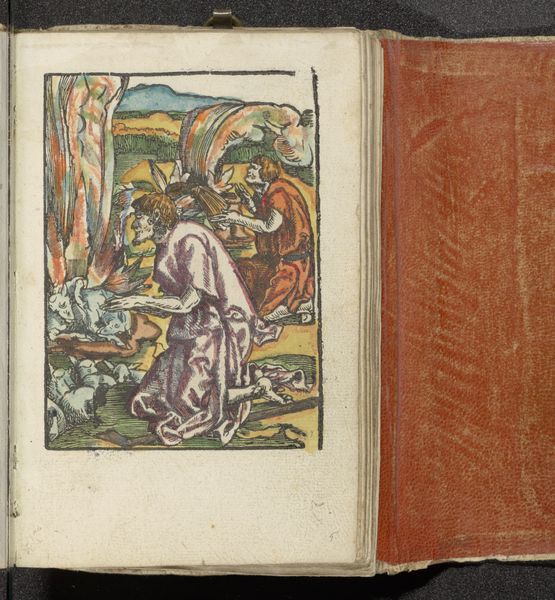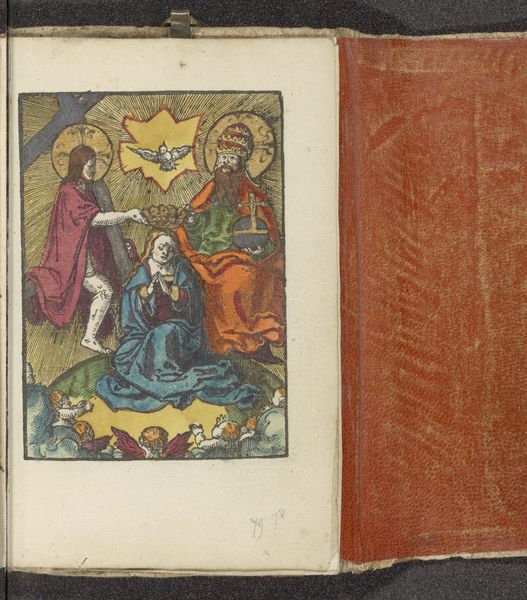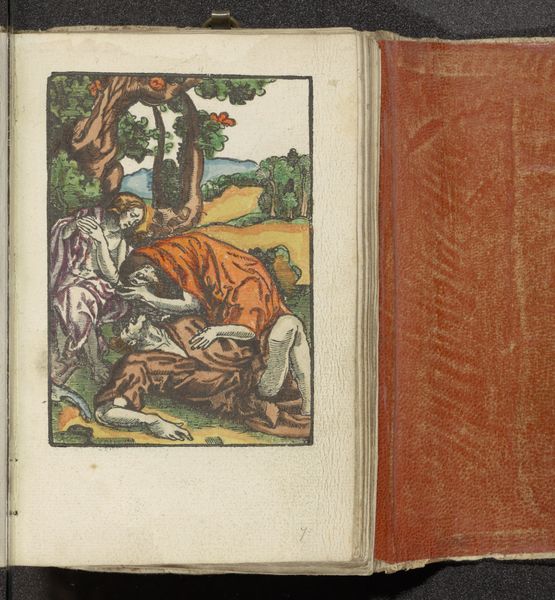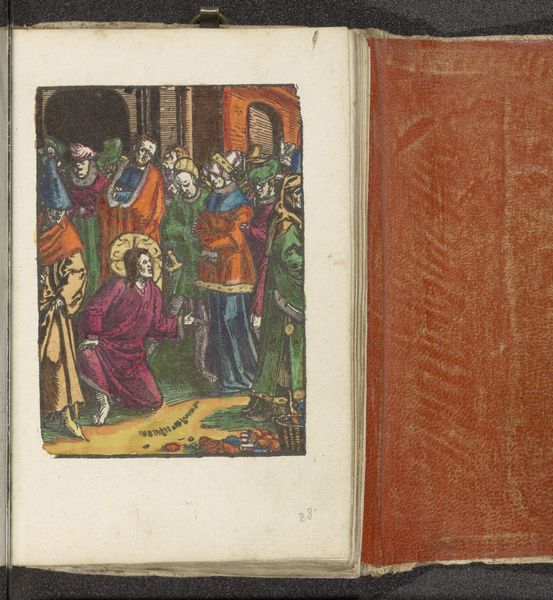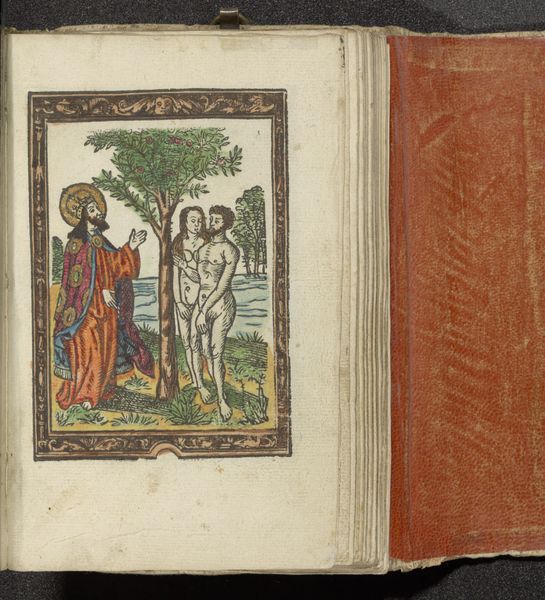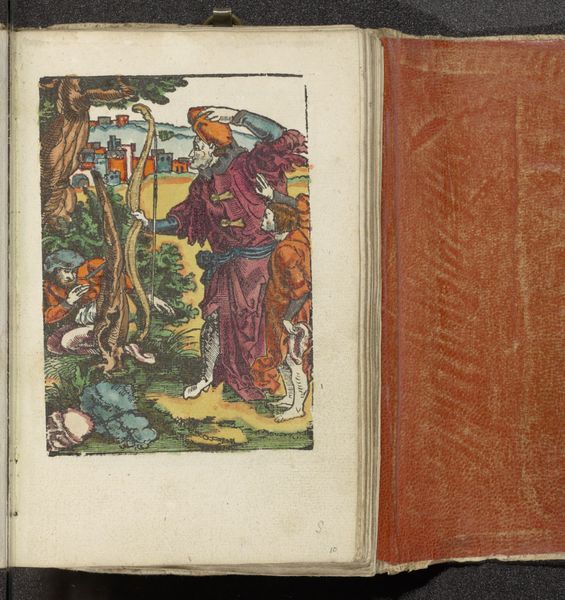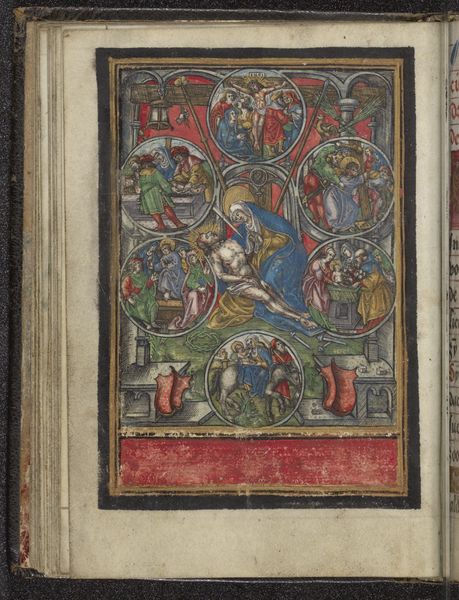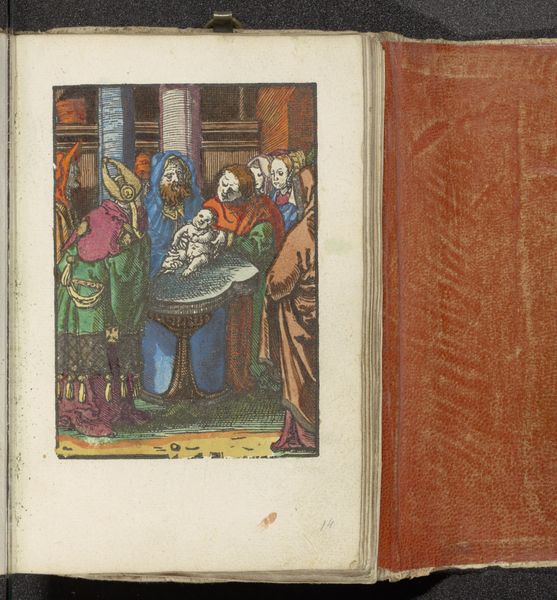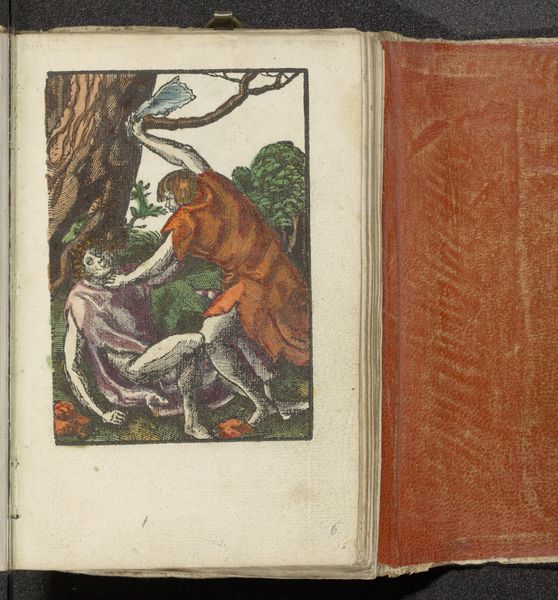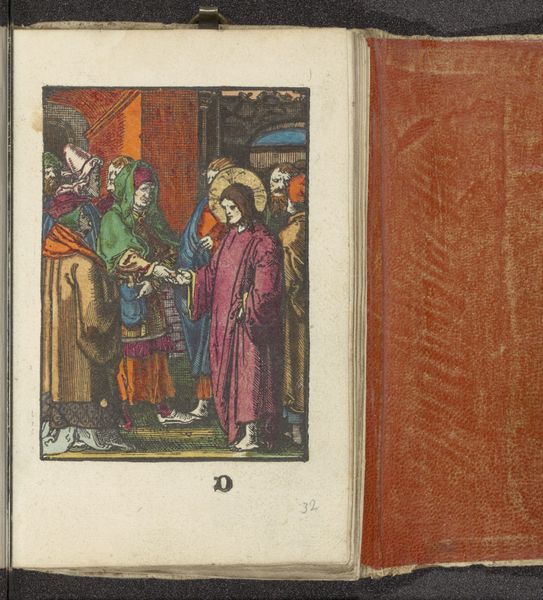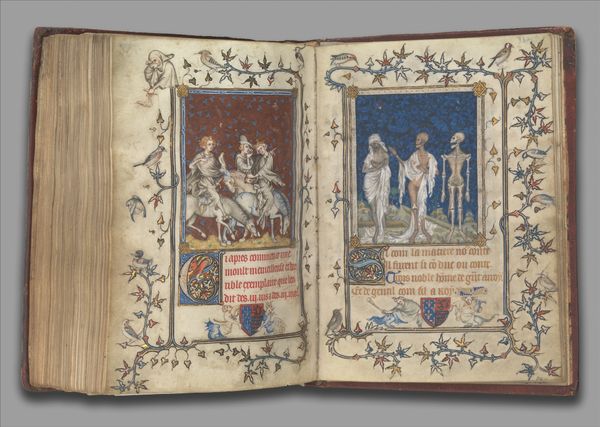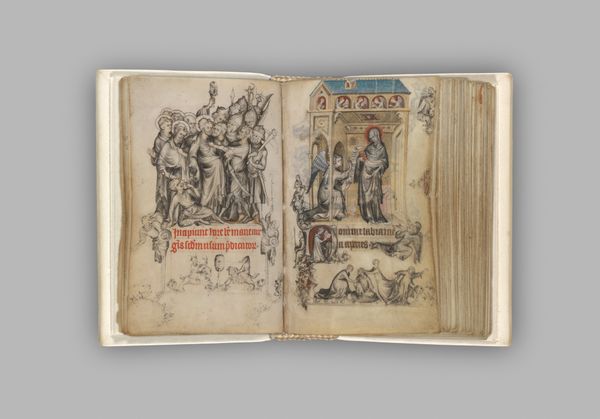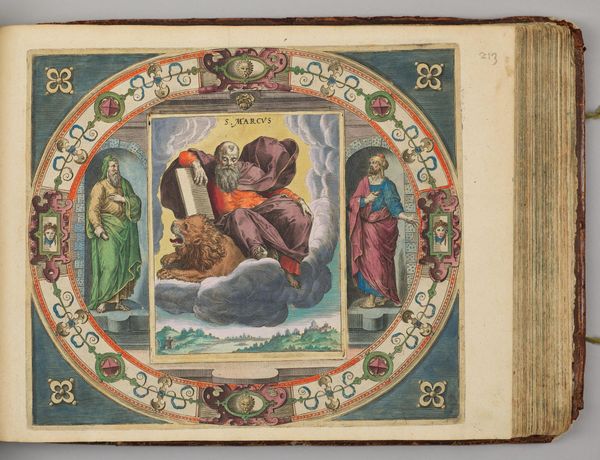
coloured-pencil, painting, print, paper
#
coloured-pencil
#
allegory
#
narrative-art
#
painting
# print
#
figuration
#
paper
#
coloured pencil
#
line
#
history-painting
#
northern-renaissance
#
miniature
Dimensions: height 111 mm, width 78 mm, height 159 mm, width 102 mm
Copyright: Rijks Museum: Open Domain
Curator: This page presents an illustration titled "Schepping," dating back to about 1530, now residing in the Rijksmuseum. It is believed to be the work of an anonymous artist, crafted using coloured pencil and print techniques. Editor: It’s a compelling piece! My immediate reaction is to its delicate and intentional craftsmanship. The labour involved is palpable. I want to know more about the paper and the printing process. Curator: Indeed, the materiality speaks volumes about the artistic process of the time. But the work is also charged with symbolism. Notice the circles surrounding the main scene – each encapsulates a different stage of creation. We witness the genesis of stars, water, and the formation of heaven. This draws on familiar religious visual language of genesis and divinity. Editor: I see that, but I’m also drawn to the labour needed to create these complex images for dissemination, the print run size, and the material culture of print and distribution during the period. This tells its own story beyond the explicit iconography of the work. Curator: Precisely! Consider also how Adam and Eve are portrayed – classical and idealised figures in a paradisiacal garden. Their innocence before the Fall represents humanity in its purest state, charged with hope, but also inevitably marked by human frailty. Editor: Right, but it also prompts thoughts about labour—who printed it? Who coloured it in? Each step imbues it with material history beyond the finished artistic product. Curator: It offers us a multi-layered view. Not just a story of divinity but also of humanity striving, experimenting, and finding its own image in creation. Editor: Ultimately, this work pushes us to ask how its physical creation, printing, and distribution intersect with—and shape—the very narratives it represents. Curator: Indeed, we begin to understand how we create stories, imbue them with significance, and share them, shaped by the material and conditions surrounding their creation.
Comments
No comments
Be the first to comment and join the conversation on the ultimate creative platform.
